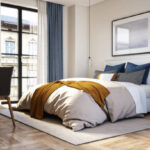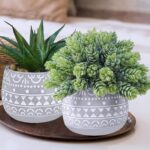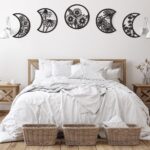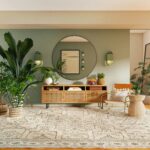A popular wall color combination for living rooms is light gray paired with navy blue accents. This pairing creates a balanced, stylish space that remains inviting.
Choosing the right wall color combination for your living room can transform the atmosphere of your space. Your living room is a central hub of activity and relaxation, making the ambiance crucial for comfort and appeal. The ideal palette should reflect your personal style while fostering a welcoming environment.
Opt for harmonious colors that complement your furniture and décor, bearing in mind that certain shades can either energize or calm the space. For smaller rooms, lighter colors can give the illusion of more space, while darker hues can create a cozy, intimate feel. Remember that your chosen colors should suit the room’s lighting, as this can significantly affect how the colors appear throughout the day.

Credit: www.pinterest.com
The Impact Of Wall Color On Living Room Ambiance
The impact of wall color on the ambiance of a living room ambiance cannot be overstated. It transforms the space. It creates feelings. It reflects your style. A well-chosen palette turns a living room into a vibrant hub or a cozy retreat. Let’s explore how the right combination paints more than just walls—it paints experiences.
Psychology Of Colors
Colors influence mood. Red energizes. Blue calms. When picking living room colors, consider their psychological effects. Yellow often brings happiness. Green can be soothing. Wall color choices can either lift spirits or provide relaxation.
- Red: Passion, Energy
- Blue: Serenity, Trust
- Yellow: Joy, Optimism
- Green: Harmony, Balance
| Color | Emotion | Best for |
|---|---|---|
| Orange | Excitement | Accents |
| Purple | Luxury | Depth |
| Pink | Love | Softness |
| Gray | Neutrality | Balance |
Setting The Room’s Mood
Wall colors set the room’s mood. A neutrals and pastels blend offers a calm, minimalist vibe. Dark hues create a cozy, intimate feel. Use color to dictate the living room’s function.
- Choose light colors for a spacious feel.
- Opt for darker walls for a snug atmosphere.
- Mix textures to add complexity.
Experiment with an accent wall. This feature introduces variety without overwhelming. Select a wall. Paint it with a contrasting, vivid color. Watch the room come alive. Wall color is a powerful tool. It can alter perceptions, moods, and energies in the living space.
Current Trends In Living Room Color Schemes
Welcome to the vibrant realm of living room aesthetics, where wall colors set the mood and character of your home. 2024 sees a dynamic shift in living room color schemes. We observe a blend of tradition with modern flair. Interior designers now seek excitedly for that perfect palette match. Let’s explore the hues transforming living rooms across the globe.
Popular Palettes
Today’s trending shades evoke warmth and comfort. Neutral bases accompanied by bold accents define contemporary style. Popular palettes include:
- Classic Blue and White: Timeless elegance breathes life into spaces.
- Earth Tones: Browns and greens mirror nature’s tranquility.
- Soothing Greys: Provide a versatile and modern backdrop.
These color schemes create peaceful environments for relaxation and social gatherings. They pair wonderfully with various decor elements, making them a safe yet stylish choice.

Emerging Color Combinations
For those embracing bolder aesthetics, new color combinations spark interest and creativity. Emerging trends showcase:
- Teal and Burnt Orange: A play on complementary colors.
- Lilac and Sage: Soft hues that offer a touch of sophistication.
- Mustard and Plum: Deep and rich, they add a posh vibe.
These adventurous blends serve as focal points, infusing rooms with personality. They challenge traditional design and open doors to unique personal expression.
Selecting the right wall colors for your living space is essential. It influences mood, reflects personal style, and alters perceived space. Consider these trendsetting palettes to modernize your living room.
Selecting The Perfect Paint Finish
Choosing the right paint finish can transform a living room. It sets the ambiance and defines the space.
The perfect finish complements your wall color combination. It also affects how the color appears in different lights.
Matte Vs. Sheen
When selecting a finish, knowing the difference between matte and sheen is key. Each offers unique benefits.
- Matte finishes absorb light. This provides a smooth, subtle look.
- Sheen finishes reflect light. They can make a space appear brighter.
Consider the room’s natural light before deciding. A matte finish suits well-lit rooms. For darker rooms, sheen can add brightness.
Discuss Durability Considerations
Durability Considerations
| Finish Type | Cleaning Ease | Durability |
|---|---|---|
| Matte | Harder To Clean | Less Durable |
| Sheen | Easier To Clean | More Durable |
Living rooms experience frequent activity. A durable finish is essential.
High-gloss or semi-gloss sheens work well. They endure cleaning without losing color.
:max_bytes(150000):strip_icc()/house-ninedesign-zannaoursurreynest3607-ZrL-ce37a3b733e34ea1a3a2e3f2103e1449-5b6f6bf8c4064c218f463ce1939b2967.jpeg)
Credit: www.thespruce.com
Color Harmony Basics
Choosing the right wall color combination for your living room can transform the space. It sets the mood and reflects your personal style. Color harmony plays a vital role in creating a cohesive look. It’s about blending colors that work well together. It makes the room feel comfortable and pleasing to the eye. Let’s dive into how to achieve this harmony.
The color wheel is a visual representation of colors arranged according to their chromatic relationship. Primary colors, red, blue, and yellow, sit equidistant from each other on the wheel. Mix these, and you get secondary colors: orange, green, and purple. This simple tool helps in creating color schemes that work well.
Several time-tested rules can help you mix and match colors like a pro. These rules use the color wheel to create balanced, harmonious combinations. The most popular ones include:
- Complementary: Combines colors opposite each other on the color wheel. Example: Blue and orange.
- Analogous: Uses colors that sit next to each other. Example: Yellow, yellow-green, and green.
- Triadic: Involves three colors evenly spaced on the wheel. Example: Red, yellow, and blue.
- Split-Complementary: A variant of the complementary scheme. It uses a base color and the two colors adjacent to it. Example: Blue, yellow-orange, and red-orange.
Believe in these simple guidelines, and select wall colors that bring out the best in your living space. The right combination not only complements your furnishings and decor but also creates a dynamic or serene environment, depending on your preferences.
Bold And Beautiful: High-contrast Combinations
High-contrast wall color combinations transform living rooms into vibrant spaces. Bold colors add drama and depth. They make design statements that captivate and inspire. Discover how to pair hues for that ‘wow’ factor.
Black And White
The timeless duo of black and white creates a stunning effect. This high-contrast combo is sleek and sophisticated. It provides a backdrop for any style, from modern to classic.
- Walls: Paint with matte black for elegance. Add glossy white trims for a polished look.
- Accessories: Use textured accents to soften the contrast. Think silver frames or plush cushions.
Vibrant Pairings
Embrace color with vibrant pairings.
| Primary Color | Secondary Color | Effect |
|---|---|---|
| Navy Blue | Mustard Yellow | Energizing and bold |
| Emerald Green | Fuchsia | Lively and playful |
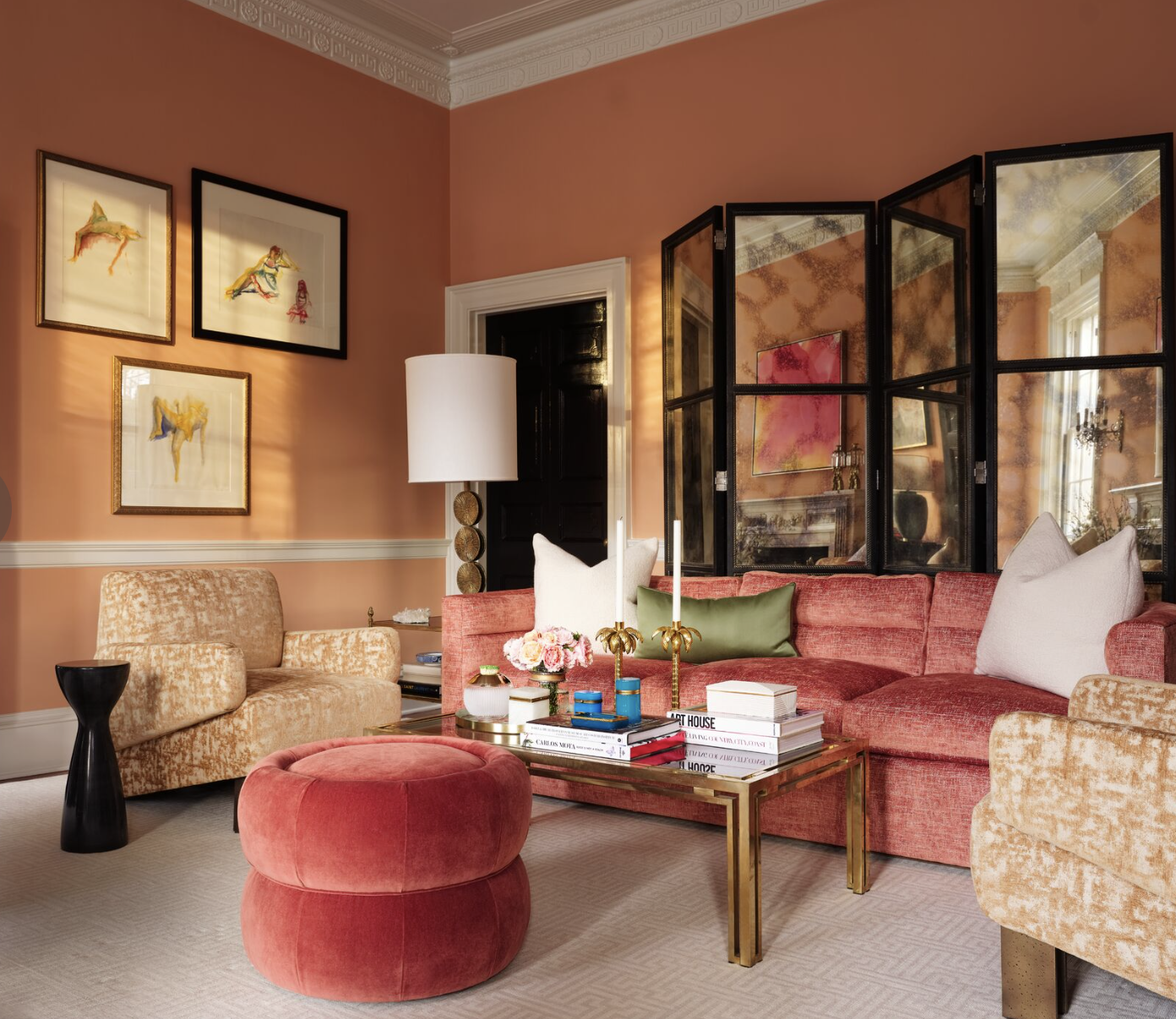
Credit: www.housebeautiful.com
Natural And Neutral: Earth-toned Themes
Choosing earth-toned wall color combinations brings a warm and welcoming feel to any living room. These colors are inspired by the natural world, offering a palette that’s both calming and versatile. Earth tones work wonderfully to create a space that feels grounded and connected to the outdoors.
Beige And Cream
Beige and cream are classic colors that bring softness to a space. This combination exudes simplicity and elegance. It allows for various decorating styles, from modern to rustic.
- Beige walls provide a neutral backdrop.
- Cream accents add a touch of light.
Pair these hues with wood furniture for a complete, earthy look.
Sage And Sand
This palette takes its cue from tranquil forests and serene deserts. Sage green lends a hint of color without overwhelming the senses. Sand tones offer a gentle contrast.
| Walls: | Sage green for calmness. |
| Trim: | Sand for a seamless transition. |
Green plants and natural textures work well with this combo.
Cool And Calm: Blue And Green Schemes
Creating a soothing atmosphere in your living room starts with color. Blue and green shades, inspired by the serenity of nature, can transform your space into a tranquil oasis. These colors blend harmoniously, promoting both peace and style.

Sea-inspired Palettes
Imagine the calm of the ocean in your living room with sea-inspired color palettes. Think of soft blues mixed with greens that mimic the sea’s depths. This scheme is perfect for unwinding after a busy day.
- Azure blue walls with aquamarine accents
- Teal touches on furniture or cushions
- Wall art that features ocean scenes
Forest Hues Collaboration
For a bolder take, dive into deeper forest hues. Combine emerald green with navy blue for a vibrant yet calming space. This combo stands out and soothes your senses.
| Wall Color | Furniture | Decor |
|---|---|---|
| Deep forest green | Dark wood pieces | Plants and nature prints |
| Rich navy blue | Light-colored fabrics | Metallic finishes |
Warm And Welcoming: Yellow And Orange Hues
Imagine a room that wraps you in a cozy sunshine hug. Yellow and orange tones do just that. They turn any living room into a snug space. These hues shine with happiness, energy, and warmth.
Sunset Inspirations
The sky at sunset is a masterpiece. Your living room can mirror this beauty.
- Soft yellows with gold accents create a calming glow.
- Burnt oranges add depth and a touch of the dramatic.
- Use lighter shades for larger areas and darker tones for accents.
Decorate with pillows and throws in sunset colors. They add layers of comfort.
Autumnal Blends
Bring the outside in. Use colors from autumn leaves. Think of the rich hues found in nature.
| Primary Color | Pairing Color |
|---|---|
| Muted Amber | Earthy Browns |
| Pumpkin Orange | Creamy Off-White |
| Harvest Gold | Soft Beige |
Accessorise with wooden furniture and rustic decor.
Select art with yellow and orange themes. They add a gallery feel.
Monochromatic Magic: One Color, Many Tones
Enter the world of Monochromatic Magic: One Color, Many Tones. A single color palette might seem simple. Yet it brings elegance and unity to your living space. It combines a base hue with varied tones. This creates a sophisticated look. Get creative with tones for a dynamic, cohesive room.
Shade Gradation
Building depth in a monochromatic room starts with shade gradation. Begin with a base color. Go lighter and darker from there. Imagine a paint strip as a guide. This helps you pick tones that naturally complement each other. Use these shades across walls, furniture, and decor.
- Main wall: Start with the medium tone. It’s your anchor.
- Accent wall: Choose a darker shade. Make a statement.
- Highlights: Select lighter shades for accessories and trim.
Texture Introductions
Textures add visual interest within a monochromatic scheme. Combine matte, glossy, and satin finishes. This brings life to the same color. Consider a velvet sofa in dark tone. Pair it with a light-toned matte wall. A glossy vase adds a gleaming touch. These selections introduce texture variety. It feels rich and vibrant.
| Element | Texture Type |
|---|---|
| Wall | Matte/Satin |
| Furniture | Velvet/Leather |
| Decor | Glossy/Metallic |
Textures And Effects: Adding Depth To Color
The allure of a well-designed living room often lies in its color palette. But beyond hues that catch the eye, there’s a deeper layer of beauty. It unfolds through textures and effects that add depth to color. Combining different techniques can breathe life into walls, making them stand out or blend in harmoniously with your living room’s design.
Faux Finishes
Faux finishes create illusions on walls, imitating materials like marble, wood, or even linen. It’s an artful approach that enriches living spaces. With this technique, ordinary walls transform into tactile canvases.
- Glazing: Layers of transparent paint add a soft glow.
- Grisaille: A monochromatic palette for a classic look.
- Color Washing: A brushed technique for subtle texture.
Wall Texturing Techniques
Textured walls contribute a tactile dimension to living room aesthetics. They create shadows and highlights, enhancing wall colors with depth. Different tools and methods craft unique sensory and visual experiences.
| Technique | Effect |
|---|---|
| Knockdown | Creates a mottled texture for a rustic feel. |
| Orange Peel | Gives a lightly bumpy surface, mimicking an orange’s skin. |
| Sand Swirl | Adds a dynamic pattern with a sense of movement. |
Lighting Interplay: How Light Affects Color
Wall color in your living room sets the mood and style. But did you know that lighting drastically influences how these colors appear? Understanding the interplay between light and color can transform your space.
Natural Vs. Artificial Light
The sun’s glow impacts wall colors differently throughout the day, changing the mood from morning to night. A pale blue may feel vibrant in the morning light, yet soft and serene by dusk.
- Morning Light: Makes cool colors appear brighter
- Evening Light: Warms up the hues, perfect for earth tones
Artificial light, on the other hand, depends on the bulbs and fixtures you choose. Incandescent lighting brings warmth, making reds and yellows more pronounced, while fluorescent lights enhance blues and greens.
Choosing Luminaires
Selecting the right light fixtures is crucial for showcasing your living room’s wall colors. Each luminaire can change a color’s intensity and feel.
| Type of Luminaire | Effect on Color |
|---|---|
| Spotlights | Intensifies colors, adds drama |
| Table Lamps | Softens hues, creates intimate glow |
| LED Strips | Provides consistent light, maintains true color |
To ensure harmony, test your luminaire choices with paint samples before making a final decision.
Accessorizing With Accents
Enliven your living room with strategic splashes of color. Accessorizing with accents infuses personality and ties your color choices together. Creative use of accent walls, art, and furnishings can transform the look and feel of your space.
Accent Walls
An accent wall acts as the focal point in any living room. Choose a wall that naturally draws attention. The color or pattern on this wall connects with other accents in the room, creating a cohesive design.
- Bold Colors: Pick a bold hue that complements the primary wall colors.
- Textures: Use wallpaper or textured paint for added depth.
- Location: The wall behind the sofa often works well as an accent feature.
Art And Furnishings
Art and furnishings bring layers of color and interest. Select items that echo the tones of your walls.
| Item | Color Tip | Placement Tip |
|---|---|---|
| Cushions | Pick colors from the accent wall. | Spread across sofas and chairs. |
| Art Pieces | Themes or frames should match the color theme. | Align at eye level, in focus areas. |
| Rugs | Choose complementary colors for harmony. | Center beneath the main table or seating area. |
Practical Tips For Diy Paint Jobs
Choosing the right wall color combination for your living room can breathe new life into your home. A splash of paint can transform a dull space into a vibrant area. But before you start, know that a seamless DIY paint job requires planning and technique. The right approach will save you time, money, and a lot of headaches.
Preparation Checklist
Good preparation is key to a perfect finish. Start by gathering your tools and materials. Protect furniture and floors with drop cloths. Fill any holes or cracks with spackle and let it dry. Sand the walls for a smooth surface. Clean the walls with a damp cloth to remove dust. Tape off trim, windows, and doorframes with painter’s tape.
- Cover all furniture and flooring.
- Repair walls and fill gaps.
- Sand for smoothness.
- Clean walls to remove dirt.
- Tape edges for sharp lines.
Applying Paint Evenly
Even application creates a professional look. Start with a primer if changing wall colors or painting over a dark shade. Stir your paint thoroughly. Use an angled brush for corners and edges. Dip your roller lightly and roll in a ‘W’ pattern on the wall for even coverage. Work from top to bottom and maintain a wet edge to avoid lap marks.
| Step | Action | Tips |
|---|---|---|
| 1 | Prime walls if necessary | Ensures paint sticks and covers evenly |
| 2 | Stir your paint | Avoids color separation |
| 3 | Brush corners and edges | Use angled brush for precision |
| 4 | Roll in ‘W’ pattern | Prevents streaks and ensures even coat |
| 5 | Keep a wet edge | Eliminates lap marks |
Check your work as you go. Allow the first coat to dry completely. Apply a second coat if necessary. Remove tape before the paint completely dries to avoid peeling. Clean your brushes and rollers, and enjoy your beautiful, freshly painted living room.
Professional Insight: Consulting With A Colorist
Choosing the perfect wall color combination for your living room involves more than picking your favorite shades. It’s about creating harmony, enhancing mood, and complementing your furniture and accessories. A colorist brings a wealth of expertise to this process. This professional offers guidance on which colors work well together and how they affect the room’s overall feel. With a colorist, you can ensure your living room is not only visually appealing but also mentally stimulating.
Benefits Of Expert Advice
- Better color matching: A colorist can create a balanced color scheme that matches your personal style and room’s natural light.
- Improved ambiance: Professionals help select colors that set the desired mood and ambiance in your living room.
- Increased home value: Expert color choices can enhance your home’s aesthetic appeal, potentially increasing its market value.
When To Hire A Professional
If you’re struggling with selecting colors or you’re unsure how to pair shades, consider hiring a professional. This becomes essential in certain scenarios:
- When you’ve got an open floor plan and need a cohesive color scheme throughout.
- For selecting colors that will complement artwork or statement furniture.
- If you plan to sell your house and want to use color to boost curb appeal.
Remember, the right time to consult a colorist is before you make any commitments. This ensures you have a well-considered plan in place.
Frequently Asked Questions For Wall Color Combination For Living Room
Which Color Combination Is Best For Living Room?
The best color combination for a living room is a neutral palette accented with pops of color. Consider pairing warm beige or gray tones with vibrant blues or greens to create a welcoming atmosphere.
What 2 Colours Go Well Together In A Living Room?
Blue and grey make a classic color pairing for a living room, offering a balance of cool tones that create a serene and stylish space.
What Is The Most Popular Wall Color For Living Room?
The most popular living room wall color is neutral gray, balancing modern appeal with timeless elegance.
How Do I Color Coordinate My Living Room?
Choose a color palette that reflects your style. Anchor the room with a neutral base for flexibility. Add pops of complementary colors with accessories. Balance the room by distributing colors evenly. Use texture and patterns to add depth and interest.
What Are Popular Wall Color Combinations?
Neutral tones like beige and gray combined with bold accents like navy blue or emerald green are currently popular in living rooms.
How To Choose Living Room Wall Colors?
Consider the room’s size, natural light, furnishings, and desired ambiance to pick wall colors that harmonize with these elements.
Conclusion
Selecting the perfect wall color combinations for your living room can transform the space. It reflects your style and sets the mood for cherished moments. Remember, the right hues can elevate your living area’s ambience. So, dive into color experimentation – your ideal palette awaits!



